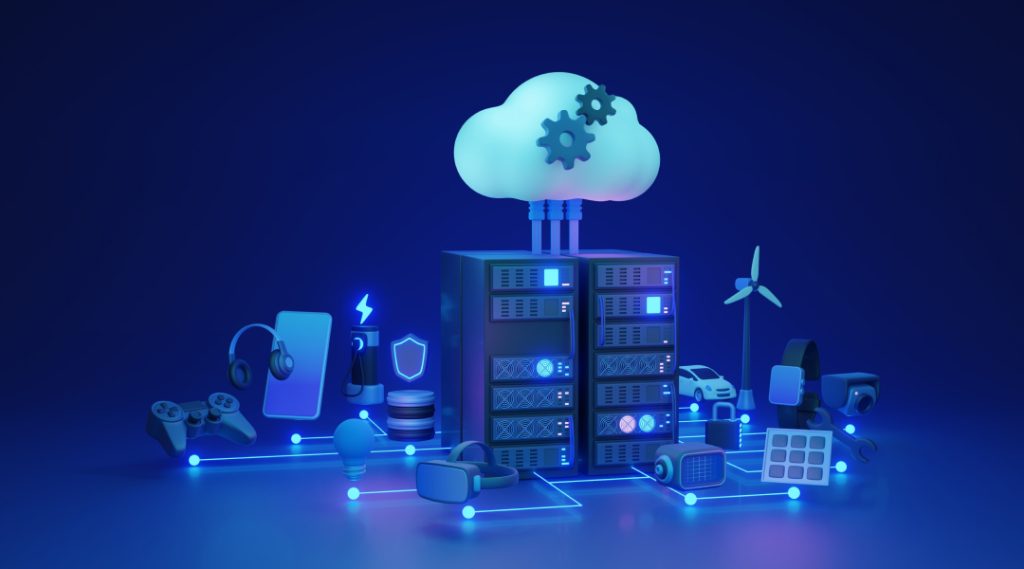Introduction:
In the ever-evolving landscape of technology, the advent of 5G networks has emerged as a beacon of unprecedented connectivity and innovation. With promises of blazing speeds, minimal latency, and enhanced reliability, 5G is poised to revolutionize industries, fueling the engine of the digital economy. This article delves into the multifaceted role of 5G devices networks in shaping the digital economy, exploring its impact across various sectors and elucidating the benefits and challenges it presents.
Understanding 5G Networks:
At its core, 5G represents the pinnacle of mobile communication standards, surpassing its predecessors in speed, efficiency, and versatility. With peak data transfer rates of up to 20 Gbps and remarkably low latency of one millisecond, 5G networks unlock a plethora of possibilities for seamless connectivity and real-time data transmission. Comprising three primary components – enhanced Mobile Broadband (eMBB), ultra-Reliable Low Latency Communications (uRLLC), and massive Machine Type Communications (mMTC) – 5G caters to diverse applications, ranging from multimedia streaming to mission-critical machine communications.
Benefits of 5G Networks:
The advantages bestowed by 5G networks are manifold, transcending boundaries and permeating across industries. In the realm of manufacturing, 5G heralds the era of smart factories, bolstering automation, and robotic control to usher in intelligent manufacturing solutions. Moreover, the healthcare sector stands to gain immensely from 5G-enabled services, facilitating remote patient monitoring, augmented reality-assisted surgeries, and seamless transfer of large imaging files. Similarly, the financial technology (Fintech) industry is poised for transformation, leveraging wearables for payment and enabling virtual financial advisory services.
Challenges and Considerations:
Despite its revolutionary potential, the deployment of 5G networks presents several challenges and considerations. The proliferation of 5G infrastructure may exacerbate congestion in the radio frequency spectrum, necessitating meticulous spectrum management strategies. Furthermore, rural areas may face disparities in network coverage, warranting concerted efforts to bridge the digital divide. Additionally, concerns regarding cybersecurity and privacy loom large, underscoring the importance of robust security frameworks in the 5G ecosystem.
Impact on Industries:
The ripple effects of 5G reverberate across industries, catalyzing innovation and fostering economic growth. In the manufacturing sector, 5G facilitates end-to-end tracking of goods, simulation of factory processes, and immersive remote operations, thereby optimizing efficiency and productivity. Likewise, the information and communication sector witnesses a surge in revenue, driven by advancements in smart technologies and connected services. Moreover, sectors such as healthcare, wholesale, retail, public services, and construction stand to benefit from the transformative potential of 5G networks, unlocking new avenues for growth and development.
Economic Implications:
The economic impact of 5G networks is profound, with projections estimating substantial revenue generation and job creation. By the year 2035, 5G networks are poised to generate $13.2 trillion in global sales activity, with manufacturing, information, and communication sectors leading the fray. The proliferation of 5G technology is expected to create 22 million jobs and foster innovation across diverse industry verticals, cementing its status as a catalyst for economic prosperity.
Future Prospects:
Looking ahead, the future of the digital economy is intricately intertwined with the trajectory of 5G networks. As technology continues to evolve, synergies between 5G, artificial intelligence, edge computing, and the Internet of Things (IoT) will unlock new realms of possibility, propelling industries towards unprecedented heights of innovation and efficiency. From smart cities to connected vehicles and beyond, the transformative power of 5G networks holds the key to unlocking a future defined by connectivity, efficiency, and economic prosperity.
The advent of 5G networks heralds a new dawn in the digital economy, ushering in an era of unparalleled connectivity, innovation, and economic growth. As industries embrace the transformative potential of 5G, they stand poised to unlock new avenues for efficiency, productivity, and value creation. By harnessing the power of 5G networks, stakeholders can navigate the complexities of the digital landscape with confidence, propelling humanity towards a future defined by connectivity, ingenuity, and prosperity.
Expanding on Industry Impact:
Manufacturing:
In the manufacturing sector, 5G networks are poised to revolutionize operations, driving efficiency and productivity to unprecedented levels. With the advent of smart factories, powered by automation and IoT technologies, manufacturers can streamline production processes, optimize resource utilization, and reduce operational costs. Real-time data analytics and predictive maintenance capabilities afforded by 5G networks enable proactive decision-making, ensuring uninterrupted production cycles and minimizing downtime. Additionally, 5G facilitates seamless integration of robotics and autonomous systems, enhancing precision and flexibility in manufacturing operations. As a result, manufacturers can respond swiftly to changing market dynamics, customize production to meet consumer demands, and gain a competitive edge in the global marketplace.
Healthcare:
The healthcare industry stands to reap significant benefits from the proliferation of 5G networks, revolutionizing patient care delivery, and clinical outcomes. With the advent of telemedicine and remote patient monitoring solutions enabled by 5G technology, healthcare providers can extend their reach beyond traditional clinical settings, delivering personalized care to patients in remote or underserved areas. Real-time transmission of medical data, including high-resolution imaging files and vital signs, facilitates timely diagnosis and treatment decisions, improving patient outcomes and reducing healthcare costs. Moreover, 5G-powered augmented reality (AR) and virtual reality (VR) applications enhance medical training and surgical procedures, enabling healthcare professionals to gain hands-on experience in immersive simulated environments. By harnessing the transformative potential of 5G networks, the healthcare industry can usher in a new era of patient-centered care, characterized by accessibility, affordability, and quality.
Transportation and Mobility:
The transportation and mobility sector is poised for a paradigm shift with the widespread adoption of 5G networks, paving the way for autonomous vehicles, connected infrastructure, and seamless travel experiences. 5G-enabled vehicle-to-everything (V2X) communication enables vehicles to exchange real-time data with other vehicles, traffic signals, and roadside sensors, enhancing safety, efficiency, and traffic management. Autonomous driving technologies leverage 5G networks to navigate complex traffic scenarios, optimize route planning, and mitigate congestion, ushering in a future of safer and more sustainable transportation. Moreover, connected vehicle services, such as infotainment, navigation, and predictive maintenance, enhance the overall driving experience, transforming vehicles into intelligent mobility platforms. By leveraging the transformative capabilities of 5G networks, the transportation and mobility sector can unlock new opportunities for innovation, efficiency, and sustainability, shaping the future of urban mobility and logistics.
Energy and Utilities:
The energy and utilities sector stands to benefit from the deployment of 5G networks, facilitating the transition towards smarter, more resilient, and sustainable infrastructure. 5G-enabled smart grid solutions enable utilities to monitor and manage energy distribution in real-time, optimizing grid performance, reducing energy losses, and enhancing reliability. Moreover, drone-based inspection and monitoring capabilities, powered by 5G connectivity, enable utilities to conduct routine maintenance and identify potential hazards with greater accuracy and efficiency. Advanced metering infrastructure (AMI) leverages 5G networks to enable bi-directional communication between smart meters and utility systems, empowering consumers to monitor and manage their energy consumption more effectively. By embracing the transformative potential of 5G networks, the energy and utilities sector can unlock new opportunities for efficiency, sustainability, and resilience, paving the way for a more intelligent and responsive energy ecosystem.
Retail and Consumer Goods:
In the retail and consumer goods sector, 5G networks are poised to revolutionize the shopping experience, driving innovation and enhancing customer engagement. With the proliferation of augmented reality (AR) and virtual reality (VR) technologies enabled by 5G, retailers can create immersive shopping experiences, allowing customers to visualize products in real-world environments before making a purchase. Moreover, 5G-powered Internet of Things (IoT) wireless devices, such as smart shelves and inventory trackers, enable retailers to optimize inventory management, reduce stockouts, and enhance supply chain efficiency. Furthermore, location-based services powered by 5G networks enable retailers to deliver personalized offers and promotions to customers based on their preferences and proximity to stores. By leveraging the transformative capabilities of 5G networks, the retail and consumer goods sector can reinvent the shopping experience, driving customer loyalty and increasing revenue.
Entertainment and Media:
The entertainment and media industry stands to benefit immensely from the proliferation of 5G networks, unlocking new avenues for content creation, distribution, and consumption. With the advent of ultra-high-definition (UHD) video streaming and low-latency gaming enabled by 5G, content creators can deliver immersive entertainment experiences to audiences worldwide. Moreover, 5G-powered augmented reality (AR) and virtual reality (VR) applications revolutionize storytelling, enabling audiences to immerse themselves in interactive narratives and virtual worlds. Furthermore, 5G networks facilitate seamless content delivery across multiple devices, from smartphones and tablets to smart TVs and gaming consoles, enhancing accessibility and convenience for consumers. By harnessing the transformative potential of 5G networks, the entertainment and media industry can redefine the future of entertainment, driving innovation and engagement in an increasingly digital world.
Education and E-Learning:
The education sector stands to undergo a profound transformation with the widespread adoption of 5G networks, revolutionizing teaching and learning experiences both inside and outside the classroom. With the proliferation of immersive technologies enabled by 5G, educators can create interactive and engaging learning experiences that cater to diverse learning styles and preferences. Moreover, 5G-powered remote learning solutions enable students to access educational resources and collaborate with peers from anywhere, anytime, breaking down geographical barriers and expanding access to quality education. Furthermore, real-time communication and collaboration tools powered by 5G networks enhance the connectivity between students, teachers, and educational institutions, fostering a culture of lifelong learning and continuous improvement. By leveraging the transformative capabilities of 5G networks, the education sector can unlock new opportunities for innovation, equity, and inclusivity, empowering learners to thrive in the digital age.
Conclusion:
In conclusion, the proliferation of 5G networks heralds a new era of connectivity, innovation, and opportunity across diverse industry verticals. From manufacturing and healthcare to transportation and entertainment, 5G networks are poised to revolutionize operations, drive efficiency, and enhance customer experiences in the digital economy. By harnessing the transformative capabilities of 5G networks, stakeholders can unlock new avenues for growth, competitiveness, and sustainability, shaping a future defined by connectivity, ingenuity, and prosperity. As we embark on this journey towards a 5G-powered future, let us embrace the possibilities and seize the opportunities that lie ahead, paving the way for a more connected, intelligent, and resilient digital economy.




